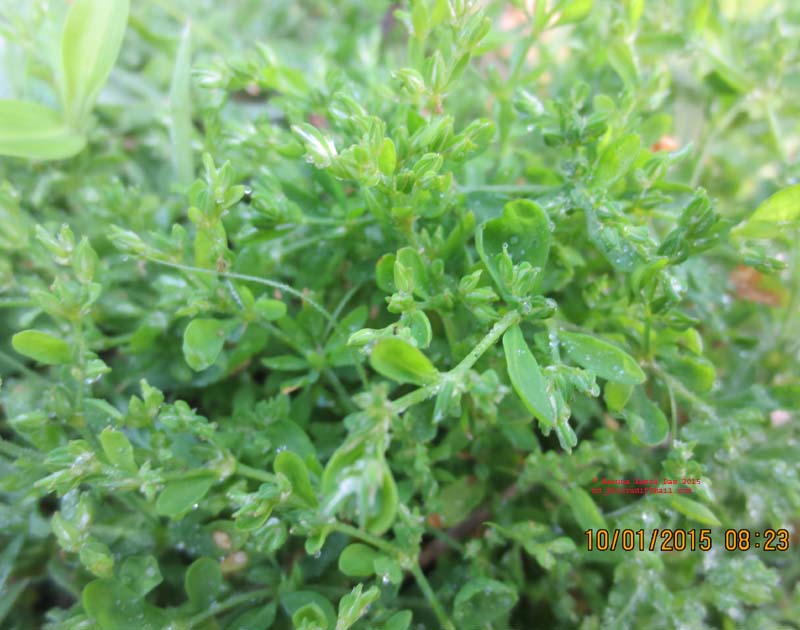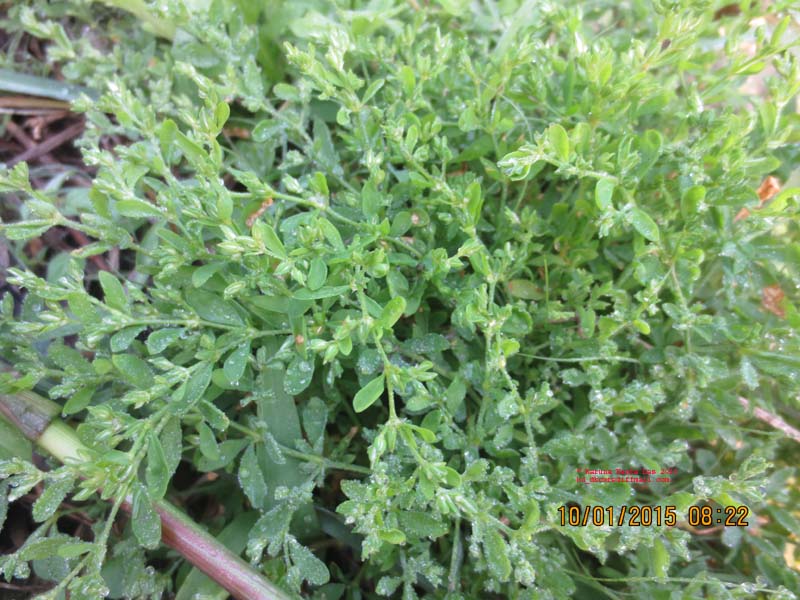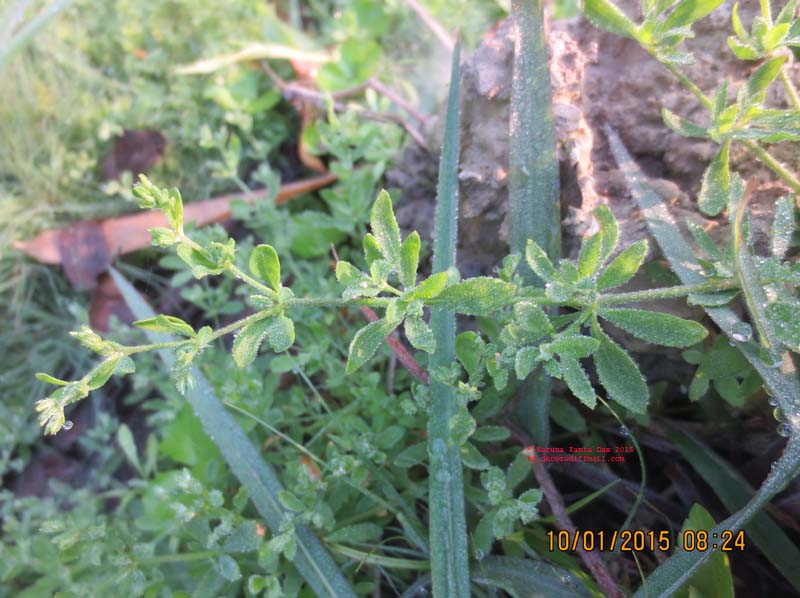|
Polycarpon prostratum (Forssk.) Asch. & Schweinf., Oesterr. B. Zeits. 39: 128 (1889) (Syn: Alsine prostrata Forssk.; Arenaria prostrata (Forssk.) Ser.; Arversia depressa (L.) Klotzsch; Arversia memphitica (Delile) Webb; Lepigonum prostratum Kindb. (Unresolved); Loeflingia indica Retz.; Pharnaceum depressum L.; Polycarpa prostrata (Forssk.) Kuntze; Polycarpaea memphitica Delile; Polycarpaea prostrata (Forssk.) Decne.; Polycarpon depressum (L.) Rohrb. [Illegitimate]; Polycarpon glaucifolium A. Chev.; Polycarpon indicum (Retz.) Merr.; Polycarpon loeflingii Wight & Arn. ex Benth.; Polycarpon memphiticum (Delile) Fenzl ex Broun & Massey; Robbairea prostrata (Forssk.) Boiss.; Spergula prostrata (Forssk.) D.Dietr.; Spergularia prostrata (Forssk.) G.Don);
.
Tropical regions of Asia and Africa as per Flora of China
.
Prostrate annual pubescent herbs; branches to 20 cm long. Leaves subsessile, 6-15 x 2-4 mm; linear-oblong, obovate or spathulate, base attenuate, apex subacute or obtuse, puberulous; stipules 2-3 mm long, lanceolate, scarious. Flowers in terminal dichasial paniculate cymes, c. 6 mm long. Sepals 5, subequal, 3-5 mm long, linear-oblong or ovate-oblong, keeled, margins scarious. Petals c. 1 mm long, linear, notched or dentate at apex. Stamens 3-5. Ovary 1-celled; style 3-fid. Capsules 1.5-2 mm long, ovoid. Seeds many, c. 0.5 mm, subcylindrical, pale brown, reticulate. Flowering and fruiting: January-March
Paddy fields and river banks in the plains
Paleotropics
(Attributions- Dr. N Sasidharan (Dr. B P Pal Fellow), Kerala Forest Research Institute, Peechi
ID of sp. from Assam KD 09 Jan 2015 : 4 posts by 3 authors. Attachments (4)
Attached images are unknown plant sp. Please ID the plant.
Date :10.01.2015
Location: Assam
Family : ??
Genus & species : ??
Habitat: Grows wild on bank of the pond
Habit : Small herb Most probably Polycarpon prostratum (Forssk.) Asch. & Schweinf. . 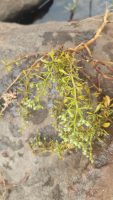 Request to identify this Wetland plant- Deep tap root rhizome: 1 high res. image. This aquatic marsh plant species was found growing submerged in a mountain stream of Shyadri hills. Most of the plant seems to be covered in yellow inflorescence, this seems to be endemic to a particular valley. In addition there is an aromatic odour (like Limnophila aromatica) on pinching the flowers. The leaves resemble Limnophila, plant seems to survive summer by deep rhizome.
This was reminiscent of Pilea microphylla but very different on closer inspection.
Request for an Identification.
Google lense Identification is Polycarpon tetraphyllum, commonly known as four-leaved allseed (also fourleaf allseed or fourleaf manyseed). To me appears more closer to Polycarpon prostratum as per images at
https://powo.science.kew.org/taxon/urn:lsid:ipni.org:names:156228-1 http://flora-peninsula-indica.ces.iisc.ac.in/herbsheet.php?id=2497&cat=7 Pl. check. Thanks for the information. This one is Polycarpon prostratum indeed. .
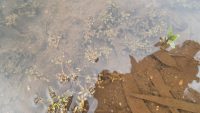 Request for Identification same plant 2nd photo: 1 high res. images. Image not clear ! I concur with … Clear images are needed for proper ID. Pictures with flowers are desirable. Pl. check To me appears more closer to Polycarpon prostratum as per images at
https://powo.science.kew.org/taxon/urn:lsid:ipni.org:names:156228-1 http://flora-peninsula-indica.ces.iisc.ac.in/herbsheet.php?id=2497&cat=7 Pl. check.
Glinus oppositifolius. I do not think so.
Pl. check Polycarpon prostratum as per images at
|
Disclaimer
1. For any mistake in identification or for becoming efloraofindia e-group member (for contributing towards building of efloraofindia or otherwise), pl. mail to indiantreepix@googlegroups.com or itpmods@googlegroups.com
2. For better viewing of species’ pages, colour scheme & formatting is being followed as: Description of the species, Details of other flora species on the same page, Uses/ harms, Distribution, Abundance/ Location/ Flowering time & date, Habit & habitat, Etymology & pronunciation, Other interesting information, stories etc., Others, Botanical names, Common names, Main point of discussion below, Discussion about Botanical names.
Navigation
- Award for eFloraofIndia
- Colour scheme & formatting
- Copyrights, Permissions, Citations
- eFloraofIndia appreciated
- Names of Plants in India site
- Flowersofindia site
- Posting Guidelines
- For members’ information
- Logo, Tagline, Acronym
- Volunteers required
- ‘Pitamah’ of eFloraofIndia
- ‘अजेय’ ‘Ajey’ of eFloraofIndia
- ‘Saarthi’ ‘सारथि’ of eFloraofIndia
- ‘Jewel’ of eFloraofIndia
- ‘Grassman’ of eFloraofIndia

